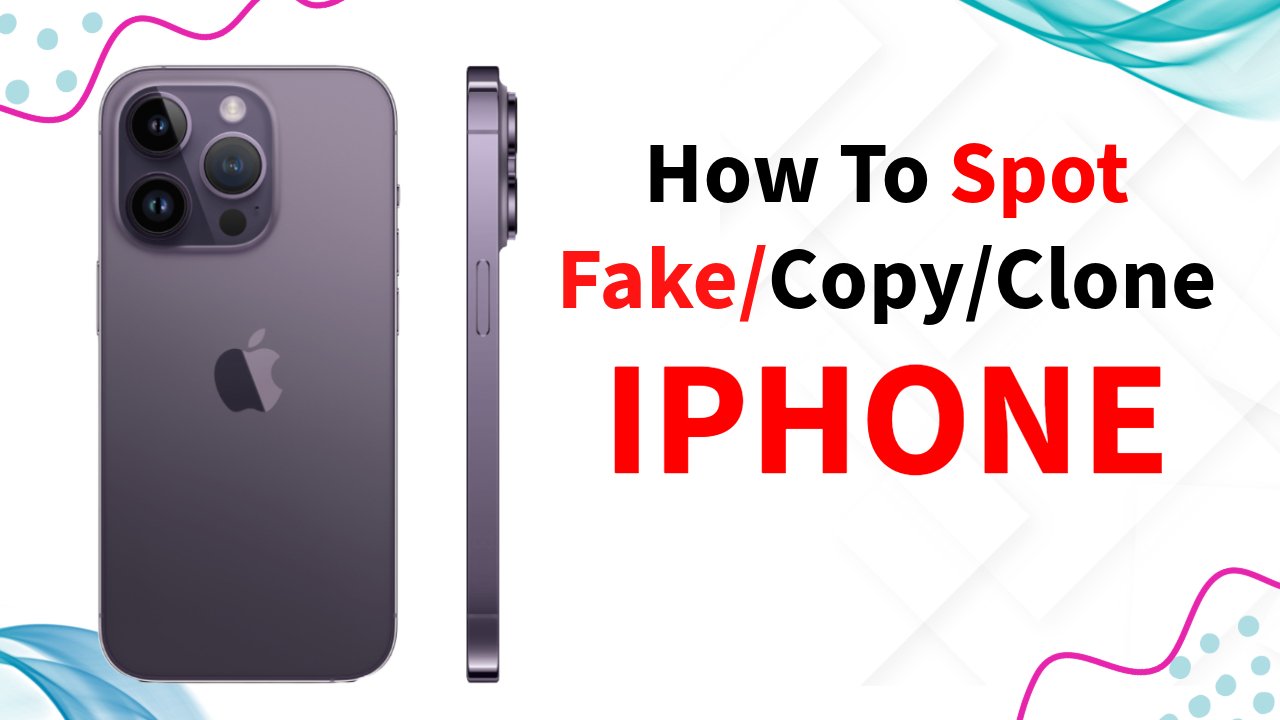In the ever-evolving world of technology, iPhones remain one of the most sought-after devices. However, with the increasing demand for these premium smartphones, counterfeiters have flooded the market with fake replicas. Distinguishing between a genuine iPhone and a counterfeit can be challenging, but with the right knowledge, you can protect yourself from falling victim to scams. In this comprehensive guide, we will explore top tips on how to identify a fake iPhone from an original, ensuring you make a smart and informed purchase.
Look at Packaging to Check if iPhone is Fake or Original
The first step in identifying a fake iPhone is to carefully examine the packaging. Authentic iPhones come in high-quality, well-designed boxes with crisp and clear printing. Counterfeit versions often have spelling errors, blurry graphics, or flimsy packaging. Additionally, genuine iPhones have a plastic film covering the screen that is perfectly aligned and bubble-free, while fake ones may have uneven placement or air bubbles.
Verify the IMEI Number to Check if iPhone is Fake or Original
Every iPhone has a unique International Mobile Equipment Identity (IMEI) number, which can be found in the device settings or engraved on the back. Genuine iPhones will have a matching IMEI on both the device and the packaging. To check the authenticity, you can enter the IMEI number on Apple’s official website or use third-party apps to ensure it aligns with Apple’s database.
Examine the Build Quality
Apple is renowned for its commitment to design and build quality. Genuine iPhones boast impeccable craftsmanship, with precise alignment of buttons, ports, and speakers. Counterfeit iPhones, on the other hand, often exhibit poor construction, loose buttons, or uneven seams. Pay attention to the weight, materials used, and the overall feel of the device. Authentic iPhones have a solid, premium feel, while counterfeits may feel lighter or flimsy.

Analyze the Operating System to Check if iPhone is Fake or Original
Counterfeit iPhones typically run on modified versions of the iOS operating system. Genuine iPhones, on the other hand, receive regular updates directly from Apple. Check for inconsistencies in the user interface, missing features, or unfamiliar icons. Additionally, genuine iPhones will have the App Store, while counterfeit versions may have alternative app marketplaces.
Test the Performance
Authentic iPhones are equipped with powerful processors and smooth performance. Fake iPhones, however, may have slower processors or glitchy software. Test the device’s speed, responsiveness, and camera quality to ensure it meets Apple’s standards. Be wary of devices that lag, freeze, or have subpar camera performance.
In the ever-expanding market of smartphones, the risk of encountering counterfeit devices is a reality. By arming yourself with the knowledge provided in this guide, you can confidently differentiate between a fake iPhone and an authentic one. Remember to scrutinize the packaging, verify the IMEI number, assess the build quality, analyze the operating system, and test the performance. These tips will empower you to make an informed purchase and enjoy the premium experience that comes with owning a genuine iPhone.
When considering purchasing an iPhone 14, it’s crucial to be aware of potential counterfeit copies. This brief guide will help you quickly identify the key differences between a genuine and a fake iPhone 14.
- Check Overall Quality: Examine the phone’s display and overall build quality. A fake iPhone 14 may have a subpar display and inferior construction. Additionally, remember that the authentic iPhone 14 doesn’t feature a home button, and a fake one might have a single-lens camera instead of a dual-lens setup.
- Look for a Watermark: Inspect the front of the phone for any watermarks. The presence of a watermark is a strong indicator that the iPhone 14 is likely fake.
- Compare Online Listings: Be cautious when shopping online. Unusually low prices and shorter warranty periods may signal a fake. Authentic iPhones typically come with a one-year warranty from Apple. Compare the appearance, logos, and screen quality to detect any inconsistencies.
- Inspect Packaging: Carefully examine the packaging for any signs of lower quality or inconsistencies compared to genuine iPhone 14 packaging. Fake iPhones may lack some of the accessories that come with the authentic device.
- Check for Defects: Thoroughly inspect the phone for hardware or software defects. Any abnormalities could indicate that the iPhone 14 is a fake.
- Watch for Spelling Mistakes: Pay attention to any spelling mistakes on the phone or its packaging, as these errors can be red flags indicating a counterfeit device.
- Verify the Serial Number: Find the iPhone’s serial number in Settings > General > About. Use Apple’s online coverage checking tool to confirm authenticity. If the tool provides valid information, including a purchase date, the iPhone 14 is likely genuine.
- Contact Apple Support: When in doubt, reach out to Apple’s customer support for assistance. They can help confirm the authenticity of the iPhone 14 before making your final purchase decision.
By following these above given steps, you can confidently navigate the market and distinguish between a genuine and a fake iPhone 14. Stay vigilant to ensure a secure and authentic purchase.


4 thoughts on “How To Check if iPhone is Fake or Original in 2024 – A Comprehensive Buyer’s Guide”